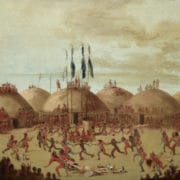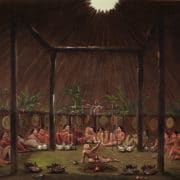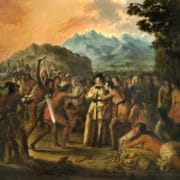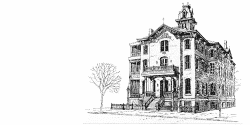Expeditionary Artists
Explore the works discussed in the video below. Click the thumbnails to expand.
The expeditionary artists who accompanied military, exploring, and fur trade expeditions left a vivid and colorful record of the Old West before it was permanently changed by the advance of the white man’s civilization. George Catlin’s documentation of the manners and customs of the Mandans and more than forty other native communities preserved important historical and cultural information that otherwise might have been lost forever.
Just six years after Catlin’s visit to the Mandans in 1832, the tribe was nearly wiped out by smallpox. Seth Eastman, a career Army officer trained in art at West Point, was one of many 19th-century painters whose western experiences were furnished by the U. S. military. The Army was the single largest source of support for artists traveling in the West prior to the Civil War.
Alfred Jacob Miller was a struggling young portraitist in New Orleans when he was invited by the wealthy Scottish sportsman and adventurer Captain William Drummond Stewart to record his private expedition to the fur trappers’ rendezvous in the summer of 1837. Miller was the first of the expeditionary artists to paint in the Rockies and the only one to depict trappers from life during the heyday of the Rocky Mountain fur trade. His sketches of the journey over the Great Plains to the Wind River Mountains of present-day Wyoming are a unique record of mountain men and the Indians with whom they traded.
In 1840, Miller traveled to Scotland, where he painted a series of monumental canvases of Stewart’s adventures in the West to decorate the spacious walls of the nobleman’s ancestral castle. John Mix Stanley accompanied one of four large expeditions commissioned by Congress to determine the optimal route for a transcontinental railroad in 1853. The experience provided Stanley with the raw material for paintings for the rest of his career.
| ← Art of the New Deal | The Hudson River School → |
| Return to the Anschutz Collection | |






